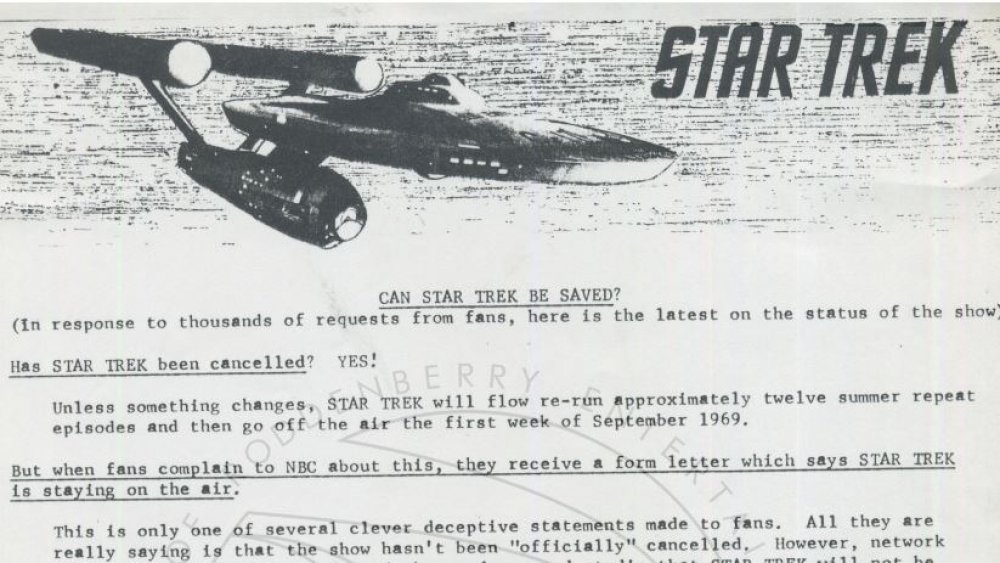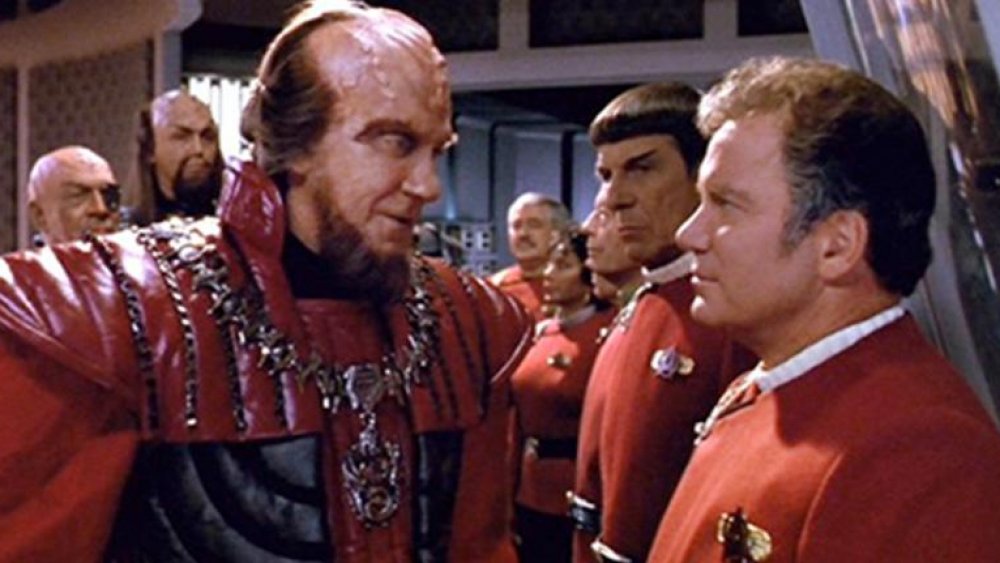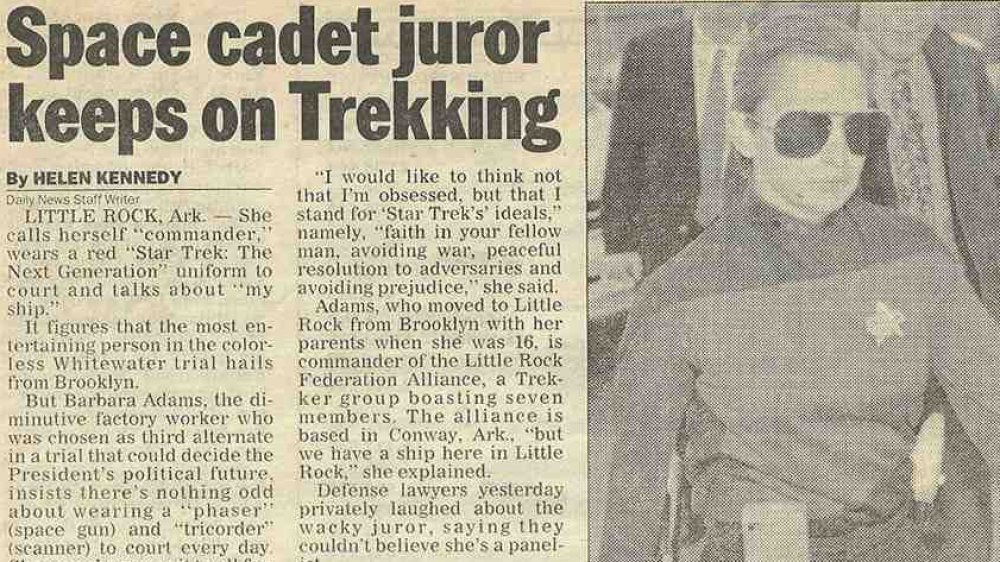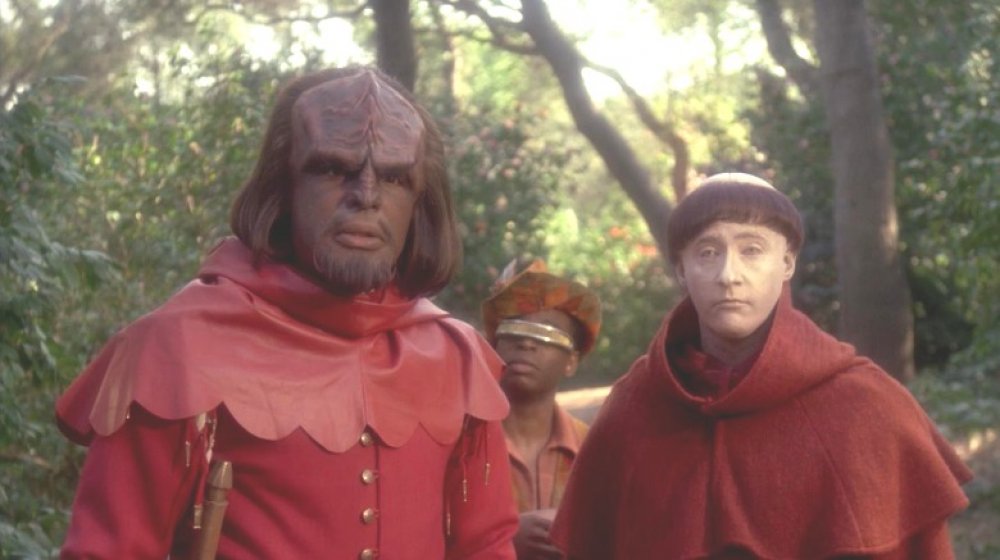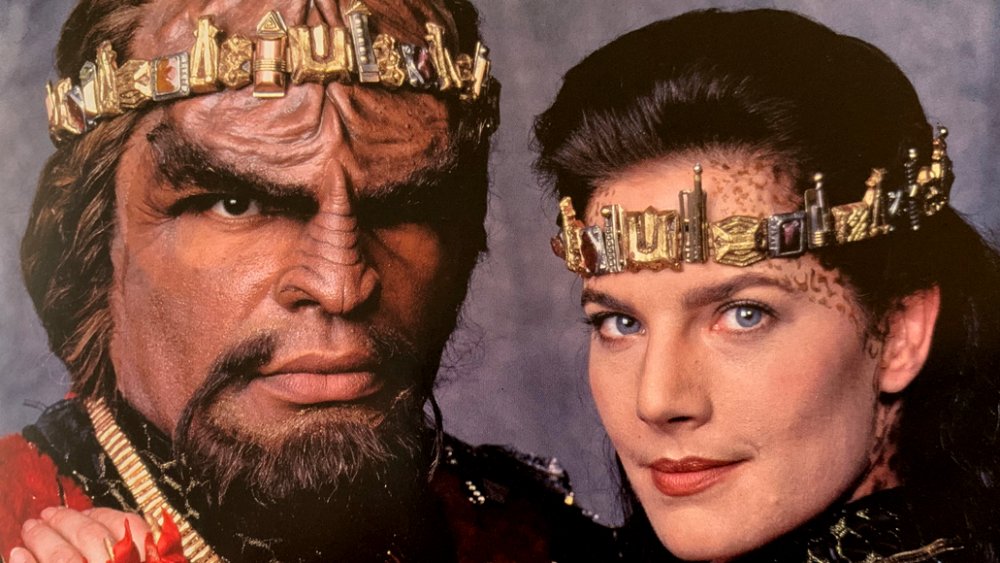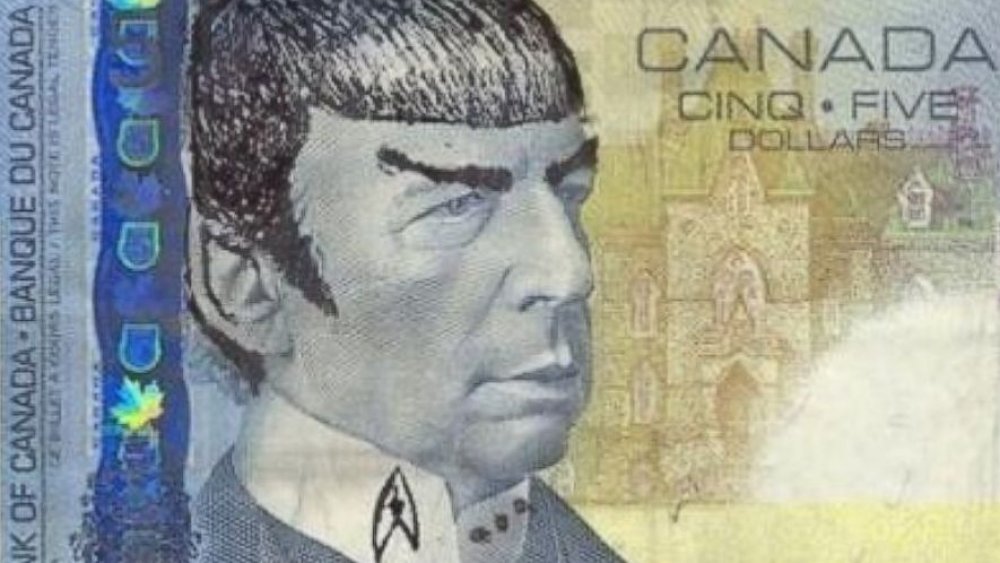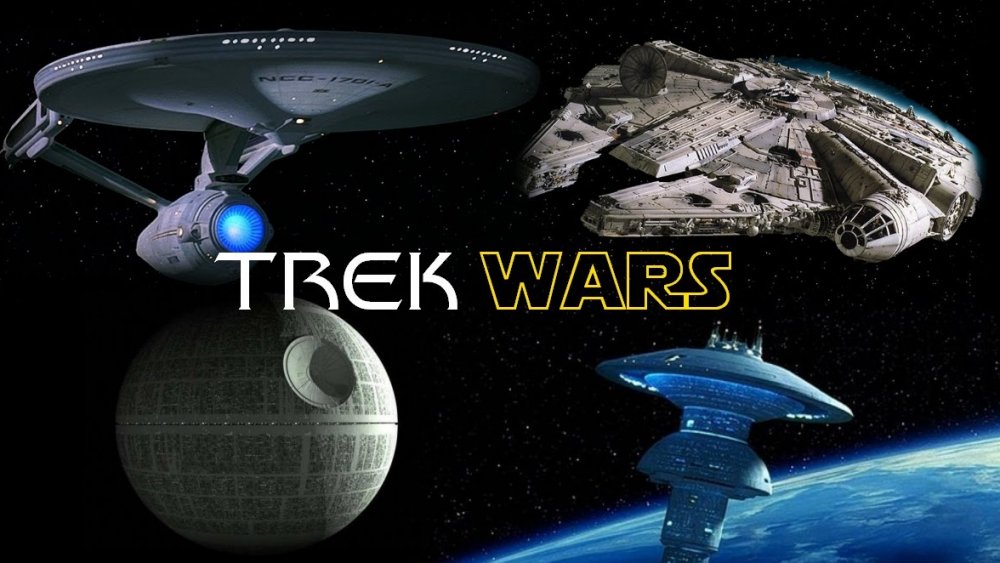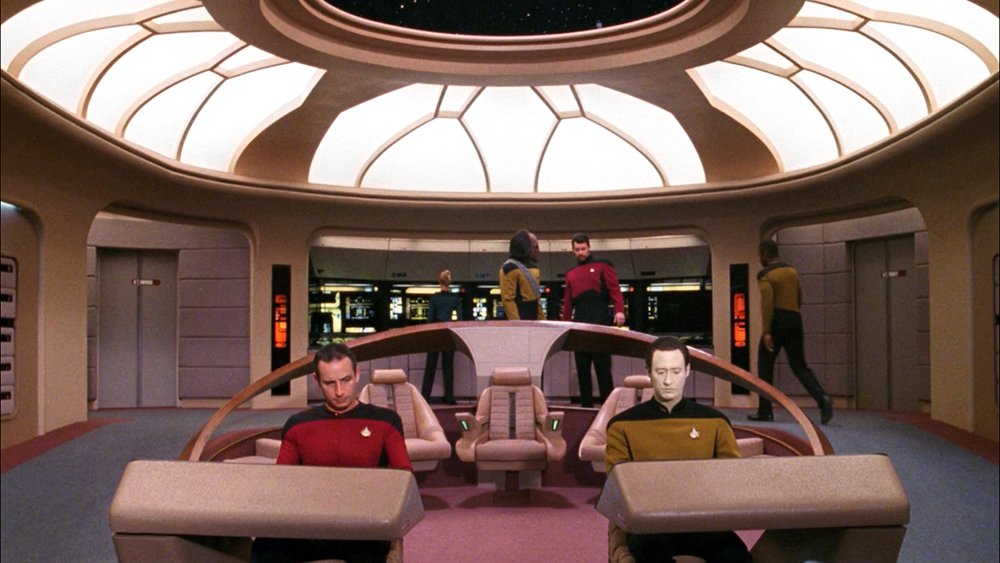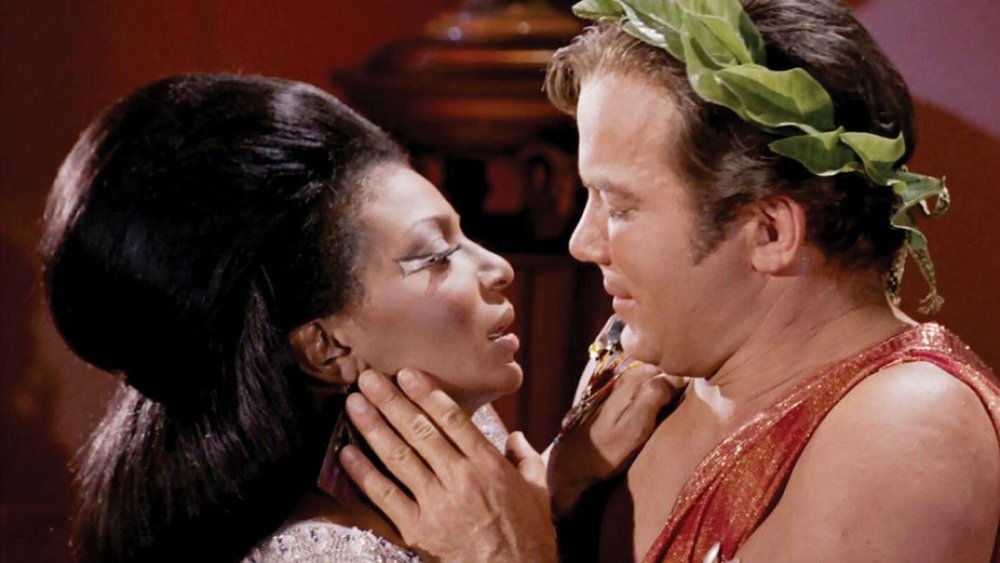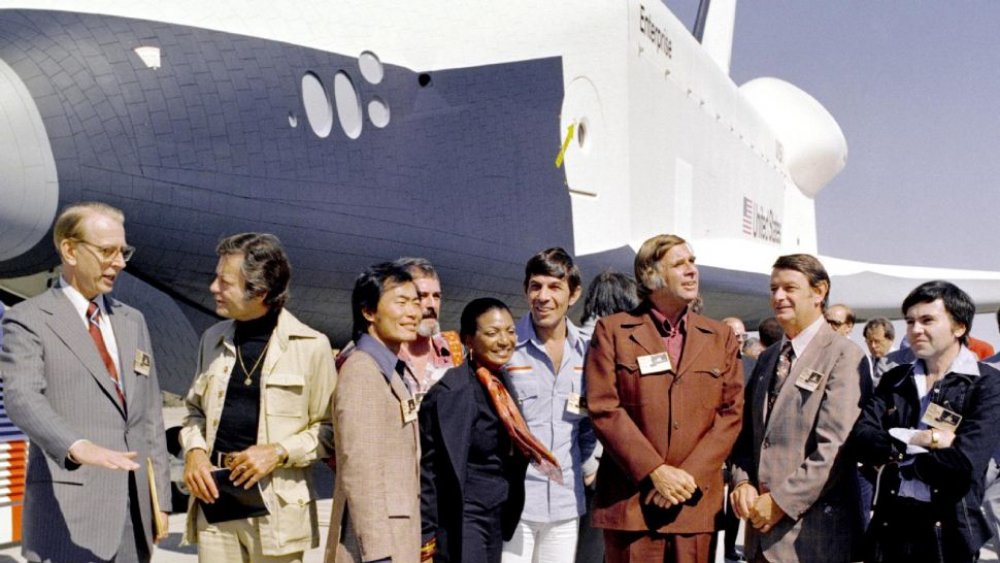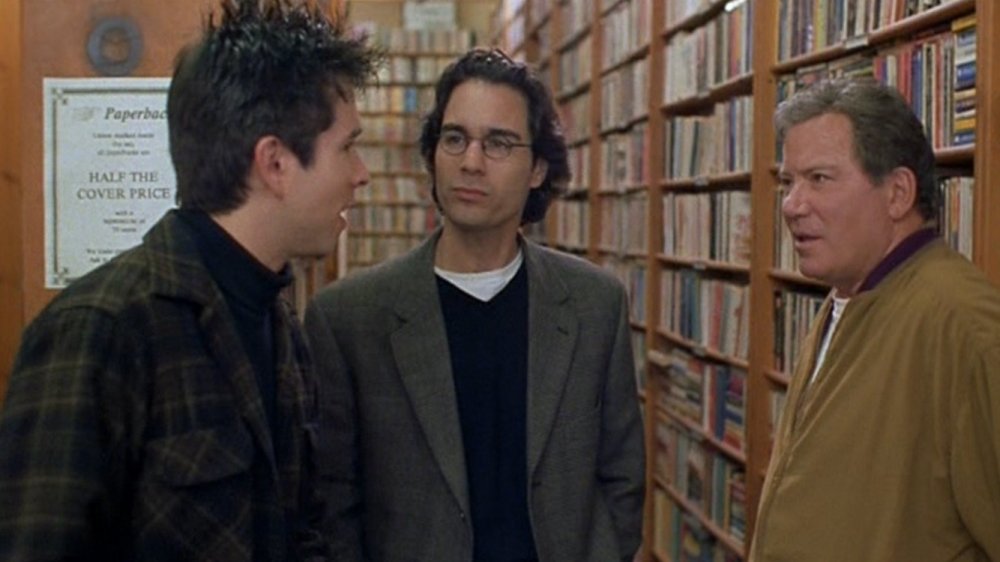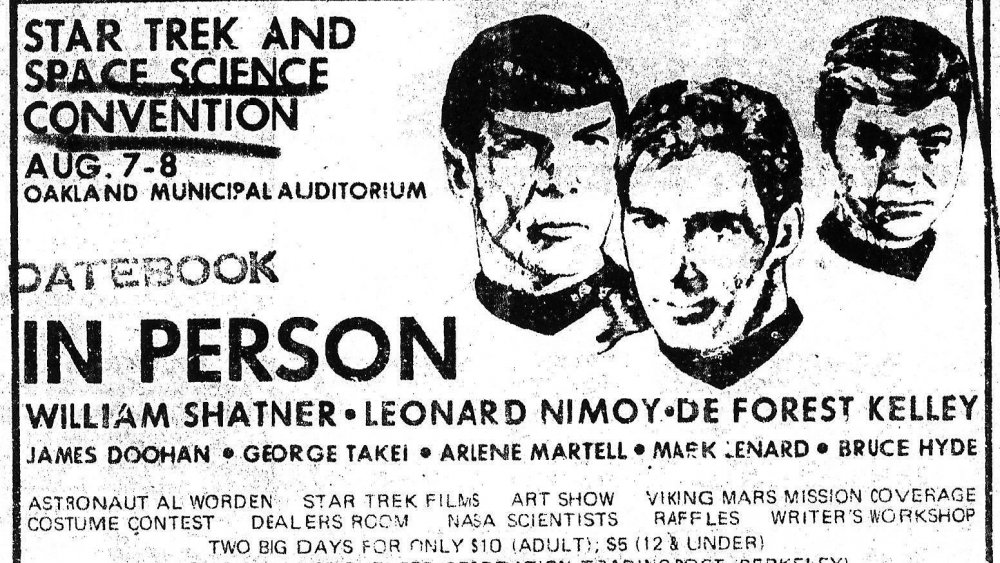The Craziest Things Star Trek Fans Have Ever Done
Star Trek is a global phenomenon. One of the largest, most popular, and most influential science fiction franchises in history, the short-lived 1960s television show has spawned not only seven spinoff shows and 13 motion pictures but possibly the most recognized fandom in the world. There are fans of the show in every country in the world and from every walk of life. President Barack Obama is a Trekkie, world-famous physicist Stephen Hawking actually appeared on an episode of Next Generation, as did real-life astronaut Mae Jemison, and it's even possible that someone in the Trump administration is a fan considering the Space Force logo is basically a revamped Starfleet Delta sign. Trekkies are a huge demographic, literally tens of millions of people around the planet. Any group of people that large will, by necessity, have its share of weirdos, crackpots, fanatics, and geniuses. Here are a few times Star Trek fans took their obsession to new heights –- and lows.
Trekkies had the original Save our Show letter-writing campaign
The original Star Trek series only lasted three seasons, but it was almost even shorter. In late 1967, rumors began to spread that the show faced cancellation. These rumors reached fans Bjo and John Trimble, who pioneered the letter-writing campaign under the technological and logistical limitations of the time. The US zip code system had only been around a few years in 1967, so Bjo and John had to learn how it worked to get such a large volume of letters to be sent out. Then they had to use a "hand-cranked mimeograph machine" (basically the copy machine's smelly, slow, prone-to-smudges, ancestor) to print thousands of Save Star Trek letters. "We folded them," said Bjo, "labeled them, and stamped them, and put them in bulk mail."
They asked friends to speak to friends. Bjo worked in the science fiction industry, was given a mailing list of 4,000 and asked them all to ask ten friends to write in. NBC received over 116,000 individual letters, including from New York Governor Nelson Rockefeller. Over 700 students protested in front of NBC's Burbank studio in what one reporter called "the most enjoyable demonstration I've covered." NBC relented and gave the show another season, but it couldn't be saved from its continually unimpressive ratings and was canceled the following year.
Star Trek fans stole over $150,000 of uniforms and equipment
Fans collect. Whatever the genre or subculture, memorablia and collectibles are a big feature of fandom. From sports to comic books to toys, the fan collectibles market is a massive business. Star Trek fans are no different, and Trekkies will pay a premium for vintage Star Trek gear. Any consumer good commanding high prices, dedicated consumers, and high competition for rare products is fertile ground for black markets. Original props, costumes, and related mementos from the sets of the various Star Trek series are very rare, and fans have been known to pay exorbitant amounts for artifacts from the show. Unfortunately, some people go a little bit too far to procure and peddle Star Trek merchandise.
In one of the biggest busts, a California man was arrested in possession of $50,000 worth of illicitly acquired Star Trek costumes and set pieces in 1990. Over $150,000 worth of original equipment and uniforms from the Original Series, The Next Generation, and a few of the movies had recently been stolen from Paramount studios. The man, Kevin Buehler, had been trying to sell or trade his ill-gotten bounty but was turned in by a fellow Trekkie who was outraged that someone would steal and sell relics sacred to the fandom. Buehler was eventually convicted of receiving stolen property, according to the LA Times.
One Trekkie wore a uniform to jury duty
In 1996, President Bill Clinton was facing some controversy. No, not the blue dress, this controversy was called Whitewater and was about some investments Bill and Hillary made. It may sound boring, but the Whitewater trial was a big deal and threatened Clinton's reelection. And one juror took it seriously enough to wear her Star Trek uniform to the trial.
Barbara Adams was a bindery supervisor from Little Rock, an alternate juror for the Whitewater trial, and a serious Trekkie. She saw the trial as an opportunity to promote the ideals of Star Trek –- inclusion, tolerance, and peace -– by wearing a Next Generation uniform to the trial. This was definitely odd but not a particular problem for anyone ... except the media.
The good news is Barbara's gambit worked: She received a lot of press. She was able to talk about her uniform and what it meant to her on national TV. She highlighted an alternative to "mindless television" and advocated for a faith in humanity, demonstrated through Star Trek. The bad news is Barbara got kicked off the jury for violating the judge's gag order: Jurors could not speak with the media, not even about their outfits. In an interview afterward, Barbara was unapologetic, "I'm on a mission to promote the Star Trek ideals. If someone is attracted to [those ideals] by all this publicity, then it was worth it." Well, fair enough.
Trekkies have performed Shakespeare in Klingon
Star Trek fans are famous for their attention to the minutia of the series. Maybe as a prank, for the third Star Trek movie, the producers decided to give the main alien antagonists, the fan-favorite Klingons, a real language, so they hired linguist Dr. Marc Okrand to design one.
The year after the film's release, Dr. Okrand's notes and descriptions of Klingon were published as The Klingon Dictionary, which became very popular. In 1992, the Klingon Language Institute was founded, and today committed Trekkies and language nerds all over the world speak the language. Klingon has evolved from vaguely alien-sounding gibberish made for small portions of a film script into a completely usable language with its own mechanics and rules and vocabulary, capable of portraying some of history's grandest literature. The Shakespeare Birthplace Trust honored the Klingon heritage of the Bard, acknowledging the human "propaganda claiming Shakespeare as one of their own." And in Washington, D.C., the Washington Shakespeare Company put on a Klingon production of scenes from several of Shakespeare's most popular plays in 2010.
The Klingon Language Institute sells Klingon language versions of the Tao Te Ching, Gilgamesh, and Sun Tzu's Art of War, among others. Duolingo offers Klingon courses, Bing has a Klingon translator, there's a Klingon Tourist Center in Stockholm, and in 2015, an Israeli tech start-up put up ads in Klingon because "anyone who can figure out what they say is invited to send in a resume."
Star Trek wedding ceremonies are pretty popular
Couples have been asking family and friends to don uncomfortable costumes for weddings forever, but Star Trek weddings have the potential to really dial up the discomfort, ritual, and, on occasion, awkwardness of wedding ceremonies.
The great thing about Star Trek weddings is the variety. Klingon weddings can feature daggers, fake blood, weird food, bulky and uncomfortable costumes for the happy couple and their guests — and lots of prosthetic makeup. Starfleet weddings can have phasers, tricorders, at least some weird food, captains and admirals, and uncomfortable uniforms for everyone that come in only three base colors, maybe prosthetic makeup. At Vulcan weddings you might find weird food, flowing robes that are warm but quite comfortable actually, and prosthetic pointed ears for everyone. Betazoid weddings would have much less uncomfortable clothing but way more of the awkward.
Or mix and match. Maybe a Bajoran bride and a Vulcan groom with a Starfleet officiant. Hire a Klingon band. Have a 3-D-chess-shaped wedding cake. Creativity is an essential part of a Star Trek wedding. And not just in choice of species. Unfortunately, unusual nuptials often need alternative arrangements. To plan his wedding, Trekkie Gerard Milewski said, "I found that the only way to get anything offbeat arranged was to go to extremely small producers of weddings supplies and to check out a lot of venues that were not traditionally used for weddings." Qapla' Gerard. Love conquers all.
Star Trek fans defaced Canadian money to honor Mr. Spock
Commander Spock wasn't Canadian. Neither was Leonard Nimoy, the actor who played the fan favorite half-Vulcan for almost 50 years. But when Nimoy died in 2015, Canadian Trekkies were distraught.
Apparently Canadian fans noticed that the portrait of former Prime Minister Sir Wilfrid Laurier on the Canadian $5 bill looks like a certain pointy-eared science officer and have for years been adding to the likeness. Other Canadians might notice arched eyebrows, pointed ears, Starfleet insignia, Vulcan salutes, and/or a dark bowl cut with spiky sideburns added to Sir Laurier's face.
Upon the actor's death, so many Canadians left their tributes on currency that it warranted an official response from the Bank of Canada. "It is not illegal to write or make other markings on bank notes," said a bank representative, warning that doing so could prevent you from using it in a transaction, muck up a bill's security features, and reduce how long the bill stays in circulation. "Furthermore," said the bank in a politely Canadian admonishment, "the Bank of Canada feels that writing and markings on bank notes are inappropriate as they are symbols of our country and a source of national pride."
The "Spock Your Fives" campaign was promoted by many, including one Canadian design firm whose spokesman reassured the Bank of Canada, saying "I am sure that Sir Wilfrid Laurier would get it."
Suckerpunch a Star Wars fan
Star Trek or Star Wars? A question supposedly deeply divisive among science fiction fans. Wired refers to it as the "Great Geek Debate." It's been referenced in the Simpsons, South Park, Saturday Night Live, the Tonight Show, and so many other places that it's firmly lodged as a cultural article of faith by this point. When the 21st century's most famous astrophysicist, Neil Degrasse Tyson, explained to Business Insider that he preferred Star Trek because Star Wars "made no attempt to portray real physics," the story was picked up by USA Today, Time, Entertainment Weekly, and more.
Whether or not the rivalry is real, the image of geeks debating the finer points of fictional physics is easy to conjure because we've seen it a million times on screen. So when an Oklahoma man was arrested in 2017 for fighting his roommate over which is better, Star Trek or Star Wars, it ticked all the right boxes.
In an Ars Technica interview, Star Wars fan Bradley Burk explained, "He was saying Spock was the sh*t and I was saying Yoda was the sh*t." Some name-calling ensued and before anyone knew what happened, Burk had been shoved to the floor and his Trek-loving roommate was choking him unconscious. The police soon arrested the Trekkie on charges of assault. (It's unclear what the outcome of the case was.)
Transformed a house into the Enterprise
Some fans have Star Trek bumper stickers, some have shelves of memorabilia, but only the truly dedicated will rebuild entire rooms of their homes. The USS Bell is a room in multimillionaire Marc Bell's former Florida mansion. It's a home theater with a full bar and a Ready Room plus a Borg regeneration chamber. The bar is in classic Original Series deep red and steel gray while the theater itself is a comfortable-looking recreation of the bridge of the Enterprise-D.
You don't need to be a millionaire to bring the 24th century into your home. Philadelphian Gary Reighn needed only $15,000 and two years to build The Bridge Home Theater, a 19x14-foot Star Trek-styled home theater. If you want a Star Trek home theater and you have two spare years, carpentry skills, and a forgiving spouse, Gary has detailed plans and photos at his website.
Tony Alleyne didn't have a spouse, forgiving or otherwise, because she had left him. So Tony poured his soul, and savings, into transforming his 500-square-foot flat in Hinckley, England, into a Trek homage. After 10 years, and a comparatively paltry $7,800, Tony had an apartment with a Starfleet galley, Enterprise-D transporter room, and a brig from Voyager. Unfortunately, after failing to find buyers for the apartment and being forced out by the terms of divorce in 2012, it's likely Tony had to redesign the futuristic flat.
There are lots of Star Trek dating sites
Anyone wanting to literally shape their lives around Star Trek should probably make sure their spouse or future significant other will be okay with it. Luckily there is now an app for that — multiple apps actually. In the last decade a whole host of dating websites have materialized to help Trekkies and Trekkers love long and prosper –- and if you have an opinion about the difference between Trekkers or Trekkies, these sites are for you. There's love in the stars, and online, for pretty much everyone these days, no matter what species you identify as.
"Set phasers to stunning!" is the masthead on Star Trek Dating. You might choose to scan for life-forms on Trek Dating or "love long and prosper" on Trekkie Dating. Trek Passions was once one of the most popular science fiction dating services, perhaps because it was one of the first Trek dating services. Also, Conan O'Brien once mocked them in an opening monologue on his show, and they encouraged apostate fans of Star Wars and other shows to join the website as well.
To be clear, it's not like specialty dating websites are unique to science fiction. Subcommunities and subcultures abound with dedicated match-making services available. Cowboys have them and farmers have them, so why not Trekkies?
Trekkies named the first space shuttle
In the 1970s, NASA was changing. The success of the Apollo program was obvious, and the glorious rush of visiting the Moon had permanently cemented the agency's place in history. But now NASA was shifting gears from exploration of space to utilization of space. They needed a reusable vehicle, something that could be an efficient transport as well as a laboratory. "The space shuttle era was all about making space familiar, and making it our home and our workplace," said Valerie Neal, curator at the Smithsonian. So the space shuttle program was greenlit and a name chosen: Constitution.
Star Trek fans, including Bjo and John Trimble, heard of the proposed shuttle and started another letter-writing campaign. They flooded the White House with unsolicited letters urging President Ford to select a different name: Enterprise. If the shuttle was supposed to make "space familiar" and make it a new home for humanity, why not choose an already familiar, beloved name with deep meaning for a substantial number of Americans?
President Ford agreed and ordered NASA to rename the shuttle. He didn't credit the letter writers or mention Star Trek, but when the Enterprise was publicly revealed in September 1976, the Star Trek cast and creator Gene Roddenberry were invited to attend. Star Trek was no longer just a show about space — its fans had guaranteed the show a place in the actual history of space exploration.
Star Trek fans made a movie with their childhood hero
In 1999, Mark Altman and Robert Burnett were struggling to put together a labor of love. The two Star Trek fans wanted to make a movie about fans that wasn't condescending or insulting. They almost succeeded.
They got nearly everything they wanted. They put together a funny script with good actors, a good soundtrack, and high production values. They reached out to their childhood hero, William Shatner, for a co-starring role, and after some rewrites, he agreed. Mark says Free Enterprise was "the first movie to actually depict genre fans as they really are. All too often, the media confuses geeks with nerds and thinks sci-fi fans are a bunch of pocket protector-wearing losers who need to get a life."
And it almost worked. The movie was received well by the critics, portrayed Star Trek fans as functional adults, and helped to restart William Shatner's career, but it failed miserably at the box office. Mark and Robert got to meet and direct Captain Kirk on set, but their film barely grossed over $30,000 and only played for two weekends at the measly nine theaters that picked it up.
Trekkies invented the idea of conventions and modern fandom
In the decade between the original series and the first movie, an entire fan infrastructure evolved as Trekkies developed into a distinct subculture. Many of the elements of modern geek chic, fan art, slash fic, cosplay, and themed conventions were started by Star Trek fans desperate for a community that shared their enthusiasm. ComicCon, DragonCon, and all the other annual conventions can be traced right back to homemade Spock ears and tricorders in the '70s.
They started news magazines, formed local fan clubs, and built their own set pieces and costumes to wear at gatherings. New stories of the intrepid Enterprise crew were written and disseminated among the community, eventually reaching publication. Collector's networks were established and proto-conventions held with panel discussions, skits, and recovered outtakes, plus film stills were shown to great applause and great auction bids.
Soon the conventions were larger, attracting thousands of people -– and the Star Trek stars themselves. By the mid-'80s, convention organizers were offering significant paychecks to Star Trek actors and other special guests to attend their larger, better organized, for-profit convention events. Fandom had started as a love affair but was becoming big business. Cross-promotions became common, special events like cruise conventions became popular, and in relatively short time, hotels and convention centers were competing to host Star Trek and science fiction cons. But it all started with fans determined to DIY their way into creating a community.

